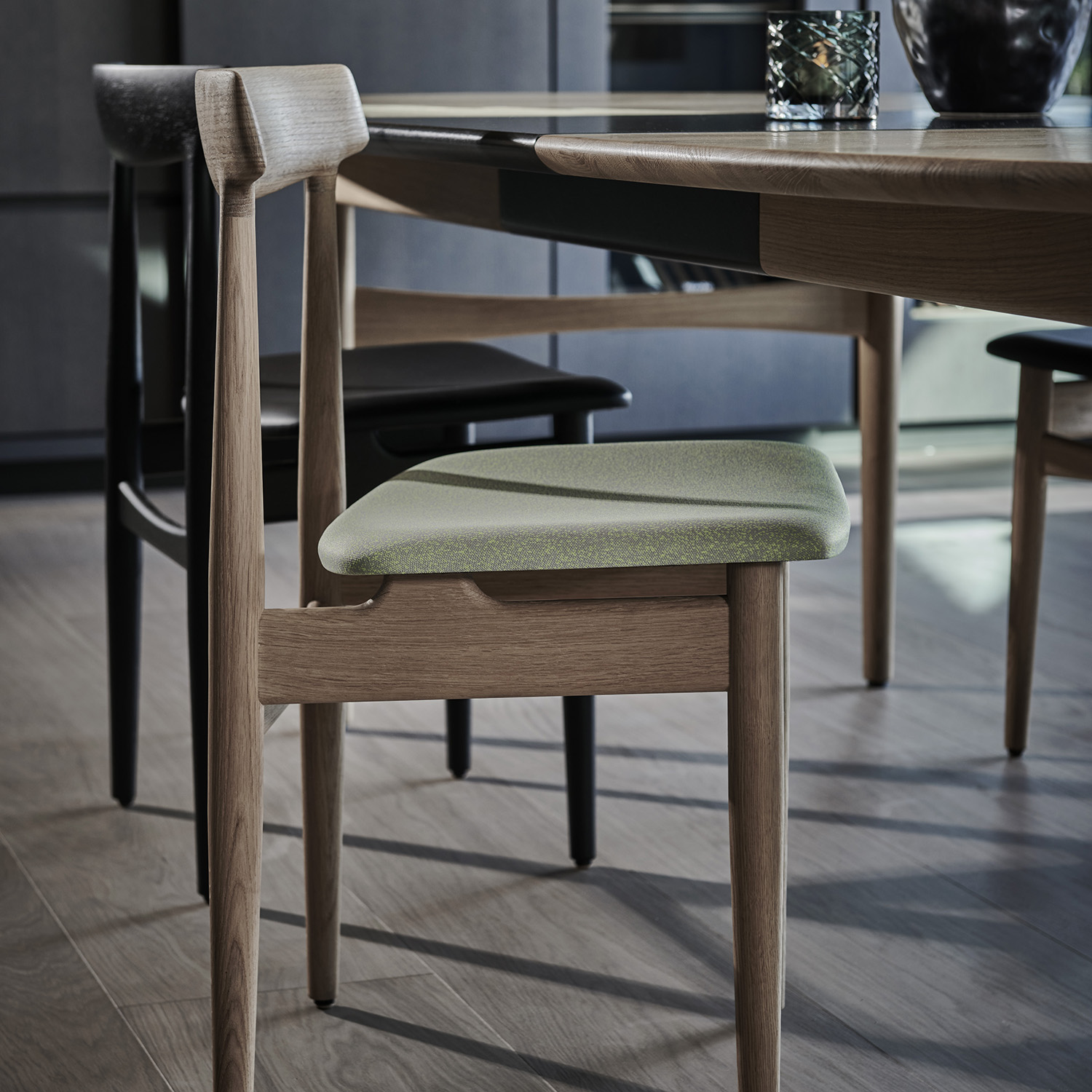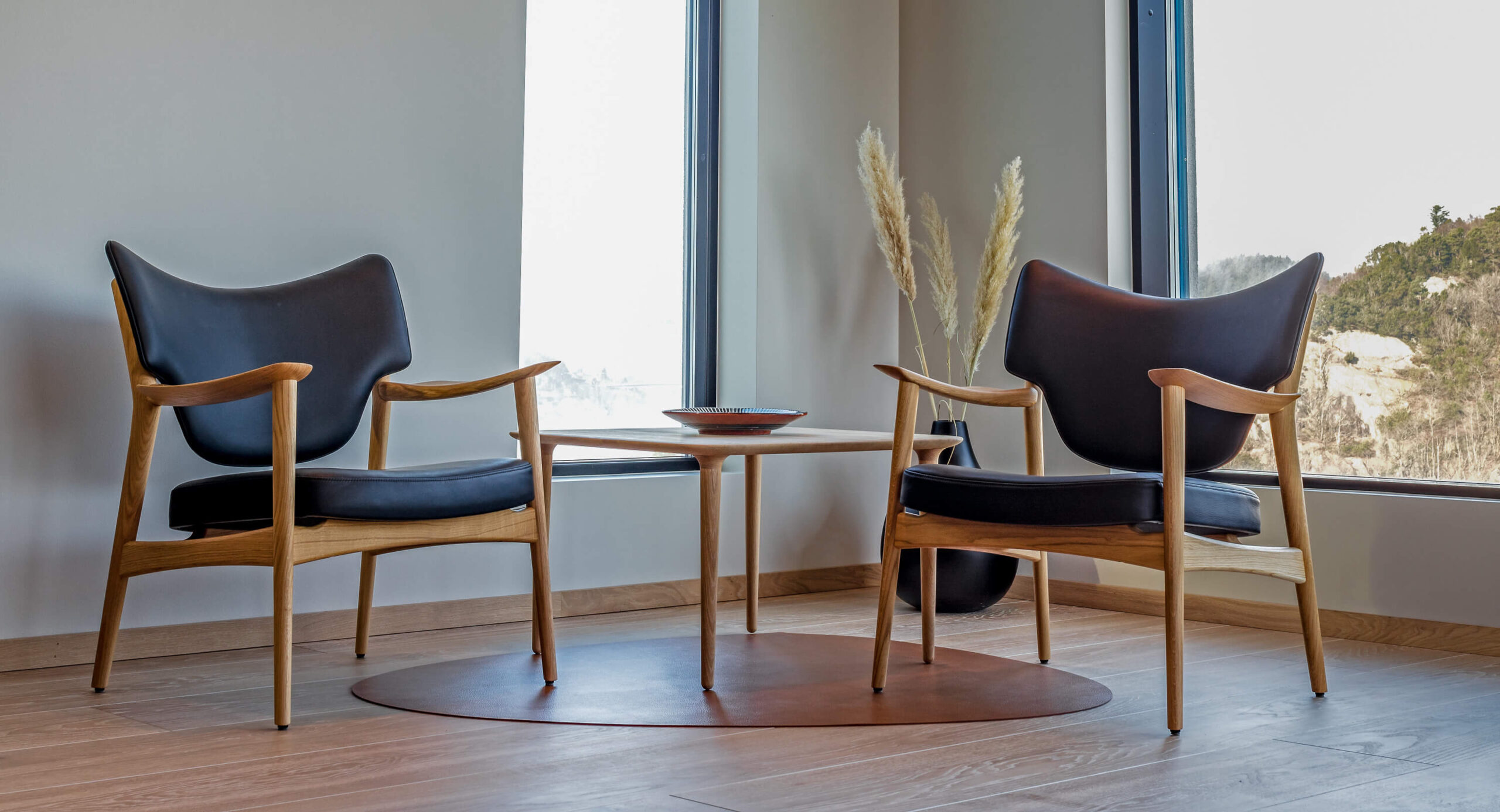
Norway’s mid-century design heritage has deep roots – all the way back to the romantic nationalism that swept Europe on a revolutionary wave through the 1800s. At that time, the early Empire style was in vogue – a richly ostentatious design movement that embraced architecture, furniture, decorative and visual arts. Dr Widar Halén, director of design and decorative arts at Oslo’s National Museum of Art, Architecture and Design, points out that in the 1940s and 1950s “many people still had that furniture in their homes.”
Norway’s mid-century design heritage has deep roots.
That style was much admired by the cohort of designers who were educated in the 1940s. But during WWII, the country had been so badly bombed that in its immediate aftermath, the focus was simply to provide people with basic homes and basic furniture to go in them. “It wasn’t about craftsmanship at that time,” says Morten Hippe, industrial designer and COO of Eikund, “but about producing simple design that could be delivered quickly.”
With the bombing of city factories, furniture production decamped to the country’s remote and rural west coast. There, farmers living near forestry had always made furniture for their own use. They then progressed to setting up cottage industries at their kitchen tables. The style that emerged was a merging of “down-to earth-farming and the craft industry atmosphere”, says Dr Halén.
“At that time, the designers wanted to create more crafted things that followed their own taste.”
By the mid-1950s, Norwegians were returning to normal life as all the necessities had been taken care of, and those basic home furnishings were in need of an upgrade. “At that time, the designers wanted to create more crafted things that followed their own taste,” says Hippe. The move was on to design and produce higher-quality items and to reintroduce some detailing into furniture.
The vast majority of these young practitioners were furniture design graduates of the Norwegian National Academy of Craft and Art Industry. The school’s furniture and interior’s course was headed up by Arne Korsmo, a hugely influential architect in the international style, and the creator of dozens of villas, several of which like the 1930s Villa Stenersen, are regarded as masterpieces of Norwegian functionalism. He opened his students’ eyes to international influences.

Korsmo and his wife Grete Prytz Kittelsen, an equally talented tableware designer, took a tour of the US to meet such modernist pioneers as Frank Lloyd-Wright, Ludwig Mies van der Rohe, and Charles and Ray Eames. “They were an amazing couple, networking with high-profile people in both architecture and design,” says Benedicte Sunde of promotional agency Design and Architecture Norway, and curator of the annual contemporary design exhibition Norwegian Presence.
Korsmo even persuaded some great educators at the Institute of Design in Chicago to travel all the way to Norway to teach summer school. “Norway was a bit behind its neighbours, so this was a boost,” says Hippe.
Designers either stayed in-house their whole career – like Torbjørn Afdal at Bruksbo and Torbjørn Bekken at Rastad & Relling – or left after a stint to go freelance – like Fredrik Kayser.
In turn, many of Korsmo’s students travelled to the US on Fulbright scholarships or through the Marshall Health fund, which was set up after the war to help develop industry. There, they were immersed in the ideas of those Bauhaus émigrés, and brought them back home, says Dr Halén.
Korsmo and Kittelsen went further to put Norwegian design on the map by putting on a major exhibition, Design in Scandinavia, which spent three years touring North America in the mid-1950s.


Out of that one school poured a host of designers who would go on to create key pieces for Norwegian manufacturers and further afield. At home, they were picked up by the two main companies: Bruksbo Tegnekontor (which for three decades was a leading design studio of quality furniture), and the progressive furniture and interior design firm Rastad & Relling Tegnekontor. Both had been set up on the west coast in the 1940s. Designers either stayed in-house their whole career – like Torbjørn Afdal at Bruksbo and Torbjørn Bekken at Rastad & Relling – or left after a stint to go freelance – like Fredrik Kayser. Either way, through their close contact with the manufacturing process, classic pieces were created. They achieved this using “quality materials with detailing that was as good as possible”, says Hippe.
The designs of that period were a rejection of the functionalism which had gone before, says contemporary designer Runa Klock. “That was now seen as too cold, and the soft curves were a reaction against that.”
During the 1950s, the top Norwegian designers were on a par with other Scandinavian designers, says Dr Halén. Afdal was recognised internationally, picking up a gold medal for his Broadway lounge chair in 1959 at Munich’s Deutsche Handwerksmesse craft fair. Among those who bought Afdal’s design were First Lady Jacqueline Kennedy and the Japanese Emperor. Norway’s 1950s answer to Philippe Starck, he also collaborated with Danish brands, including home décor firm Georg Jensen for styling.
“We had our own style, which was more arty and simple.”
But despite its design talent, Norway was isolated and lacked international influence. “We were still relatively poor, locked between fjords and mountains,” says Hippe. Without big factories, it couldn’t manufacturer at volume or promote home-grown design.
Nor did the government wave the flag for the furniture sector, as was happening in Sweden, Finland and Denmark, which was leader of the Scandi pack in the 1950s.
But in one respect, this lack of support played into the hands of Norway’s creatives. “It meant that they were freer and more colourful, and had more quirkiness about them,” says Dr Halén.
Hippe backs this up: “We had our own style, which was more arty and simple.”
Despite these differences, the Norwegians were scooped up into the ‘Scandinavian design’ movement – a term coined by London’s contemporary design store, Heal’s, for an exhibition in 1951. “This was the first time it was used internationally,” says Dr Halén, “It was a marketing ploy.” The term was then given more oxygen through the North American touring exhibition, titled Design in Scandinavia.
The Norwegians were scooped up into the ‘Scandinavian design’ movement – a term coined by London’s contemporary design store, Heal’s, for an exhibition in 1951.
Norwegian design got further exposure at Sweden’s Helsingborg exhibition of 1955, also known as H55. That was where Fredrik Kayser launched his Krysset chair. Other opportunities to trumpet Norwegian design were the Nordic International Furniture Exhibition in the Danish town of Fredericia, and Stavanger’s Norwegian Furniture Fair. Plus the design magazine Bonytt, which launched in 1941, championed these designers and their output.
Despite Norwegian design’s relatively low profile internationally, business was booming on the west coast, and into the 1960s around 50 carpentry workshops were operating there. “Every village had at least one small furniture factory,” says Klock, who grew up in that region.
But two factors conspired against Norway’s mid-century design talent: oil and national temperament. With the discovery of oil in the late 1960s, many skilled people jumped ship, and furniture production suffered.
“The Government’s focus and investment went into the North Sea, and small manufacturers couldn’t keep up,” says Sunde. What’s more, Norwegians now had the money to import furniture from abroad.
While a few remaining manufacturers struggled on, Norway’s neighbours (especially Denmark, who relied on furniture manufacturing as a key industry) were picking up the design pace, heavily promoting their wares internationally, and reproducing their 1950s classics, making them worldwide hits.
“We Norwegians don’t want to brag or stand out, we’re a shy country.”
But such shameless self-promotion is not the Norwegian way, says Hippe. “We Norwegians don’t want to brag or stand out, we’re a shy country.”
He also wonders if some of those 1950s products were ahead of their time. He cites Sven Ivar Dysthe’s Era dining chair with its black powder coated steel frame. “No one would produce it, it was too modern at the time.” Meanwhile there wasn’t a big enough appetite for some innovative products, meaning they sold poorly.
And because the design of that period wasn’t kept alive through reproductions or awareness, the upshot was “a generation of designers who were lost and forgotten”, says Sunde.
However, things started to turn around in the 1990s, with the rise of minimalism, a movement “that fits in with Scandinavian lightness”, says Dr Halén. Very quickly, versions of the region’s aesthetic were everywhere, spearheaded by Wallpaper magazine’s arrival in 1998, which brought Scandinavian design to a wider audience.
Back at home, mid-century designers got a further boost in 2013, with the launch of Norwegian Icons, an exhibition and auction. Held in Oslo, it showcased important Norwegian design from 1940-1975.

And whereas reproduction has come to dominate the design industries of its neighbours, Norwegian classics are still there to be discovered. So Arne Jacobsen and Alvar Aalto are household names and brands, but “here, that period of design is still a well-kept secret,” says Klock, who scours flea markets with an informed eye, and can still pick up originals.
Hippe echoes this: “Norwegians are looking abroad for pieces, they don’t know what’s on their doorstep.”
But people are slowly starting to appreciate the country’s recent design history, and to realise that its mid-century design has something different and exciting to offer, believes Hippe. “I think there’s a timeless feel to it, simple, but not pure minimalism, which can be boring. It has texture and the right amount of detail.”
“Norwegians are looking abroad for pieces, they don’t know what’s on their doorstep.”
Now there is a fledgling appetite for Norwegian mid-century design to come into its own. “The designers of the 1950s and 1960s give us self-esteem and show us that we come from a tradition, built on Norwegian values rather than a particular aesthetic,” says Klock.
Or as Morten puts it: “Now our mission is not to just sell fish and pump up oil, but to embrace our heritage.”

